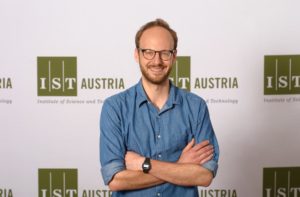May 4, 2016
IST Austria Professor receives Human Frontier Science Program grant
Martin Loose awarded with highly competitive Young Investigator grant

Martin Loose, Assistant Professor at IST Austria, was awarded with the Young Investigator grant from the Human Frontier Science Program (HFSP). The grant is worth $1.35 million in total for four research teams and a duration of three years. The project “reconstitution of cell polarity and axis determination in a cell-free system” will start in fall 2016.
The International Human Frontier Science Program Organization (HFSPO) exclusively funds scientific projects in life sciences that are highly innovative and risky. The funding program enjoys an excellent reputation within the scientific community because of the strict focus on pioneer research and is coveted because of the high autonomy given by the funding organization. Consequently, the funding is very competitive; this year only 3% of applicants received an award. With the current grant, IST Austria has already accumulated more than EUR 1.84 million of HFSP funding.
Martin Loose will join forces with Ivo Telley (Instituto Gulbenkian de Ciencia, Portugal), Sebastian Maurer (Center for Genomic Regulation, Spain), and Timothy Saunders (Mechanobiology Institute, Singapore). The team will investigate cell polarity, a phenomenon that is responsible for spatial differences: for instance, the embryo of a Drosophila fly already shows an asymmetric distribution of proteins for the head and the body at the very first cell division. The project partners will build a simplified system for which they will extract the cytoplasm of an egg cell and insert it into artificial chambers with various geometric properties. The goal will be to understand the molecular processes and fundamental principles that underlie cell polarity.
This is another success for the biochemist Loose who was awarded with an ERC Starting Grant just a few months ago to investigate the mechanisms of the self-organizing properties of bacterial cells.



